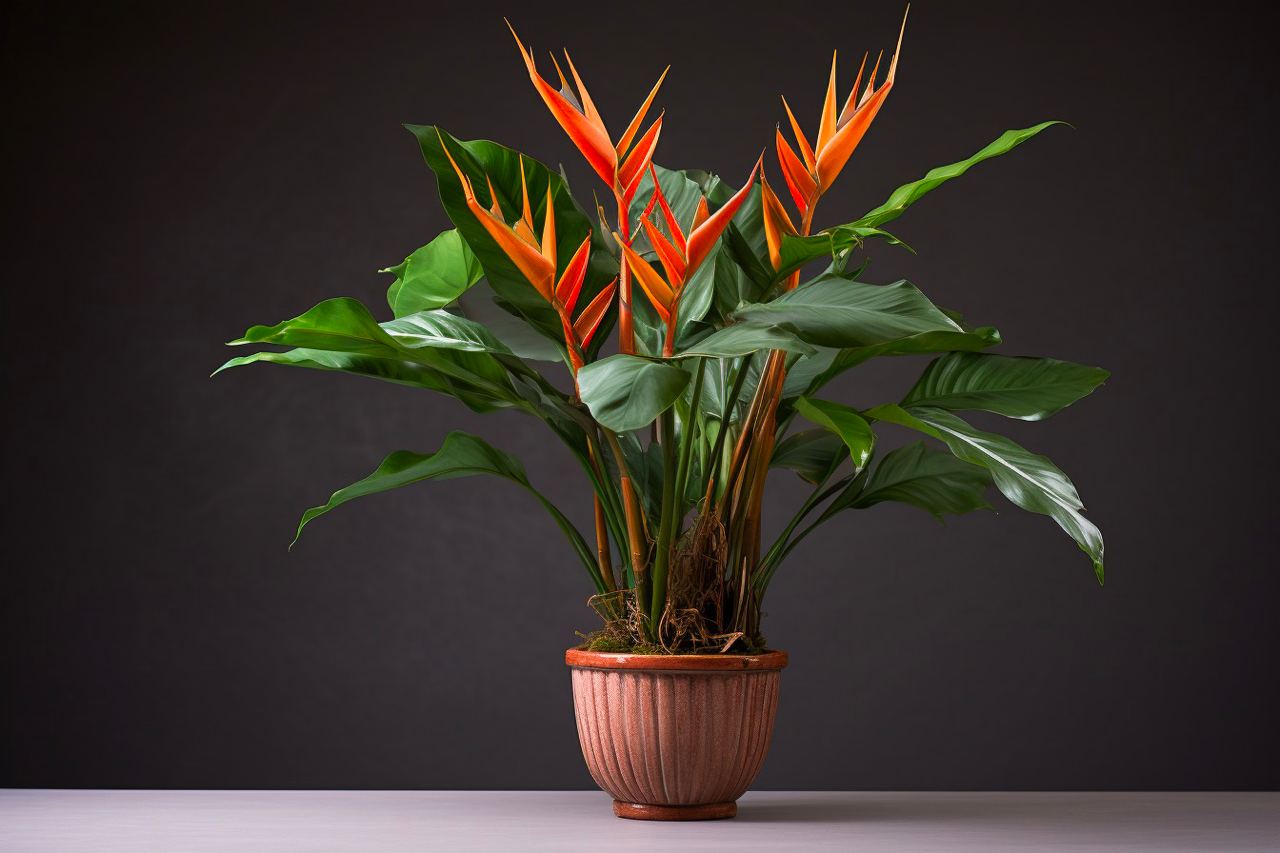Botanical Name: Strelitzia reginae
Nicknames: Bird of Paradise, Orange Bird of Paradise, Crane Flower
The unique bird-shaped flower makes the Bird of Paradise one of the most recognizable plants in the world. While it is a slow-growing tropical plant, the results are well worth the wait. This plant has a very bold and hardy structure with long, oval-shaped leaves growing from the base. Flowers will emerge one at a time consisting of three blue leaves and three orange leaves. The flowers will bloom anywhere from late fall to early spring. Look at the flower at the right angle and you’ll see the shape of a bird’s head.

Let There Be Light: The Bird of Paradise’s Sunlit World
The Bird of Paradise is like that friend who loves basking in the sun at the beach. It thrives in bright, direct sunlight. I’ve found the perfect spot for mine is near a south-facing window where it gets plenty of light. This ensures those gorgeous, large leaves stay healthy and help it produce its iconic flowers.
Key Tip: If your plant isn’t blooming, it might need more light!
Hydration Station: Watering Your Tropical Beauty
Watering your Bird of Paradise is like walking a tightrope – it’s all about balance. During the growing season (spring and summer), keep the soil consistently moist but not soggy. In the cooler months, let the soil dry out a bit more between waterings.
Remember: Overwatering can lead to root rot, so ensure good drainage!
Environment Essentials: Creating a Tropical Haven
Your Bird of Paradise will flourish in a warm, humid environment. They love temperatures between 65°F and 70°F (18°C – 21°C) and appreciate humidity. If your home is on the drier side, try using a humidifier or placing a water tray near the plant.
Fun Fact: This plant can tolerate some draught but prefers a stable environment.
Growth Journey: Watching Your Plant Soar
Watching a Bird of Paradise grow is like observing a slow but rewarding dance. It’s a moderately fast grower and can reach up to 6 feet indoors! Regular feeding during the growing season with a balanced fertilizer helps encourage growth.
Alert: Yellowing leaves can indicate overwatering or poor drainage.
The Art of Repotting: Giving Space to Grow
Repotting a Bird of Paradise can be a bit of a workout, as they can get quite large. Generally, repotting every 2-3 years is a good rhythm. Choose a pot that’s one size larger with ample drainage.
Tip: Spring is the best time to repot, just as the growing season begins.
Sharing the Beauty: Propagating Your Plant
Propagating a Bird of Paradise is a bit more challenging but rewarding. The best method is division during repotting. Carefully separate a part of the plant, ensuring it has roots, and pot it separately.
Be Patient: It can take a few years for a new plant to flower.
A Word on Safety: Toxicity Concerns
A crucial aspect to consider is the Bird of Paradise’s toxicity. It’s toxic to cats, dogs, and other pets if ingested. Always keep it out of reach of your furry friends.
Pet Owners Beware: Always monitor your pets around houseplants.
Embracing the Journey with Your Bird of Paradise
Caring for a Bird of Paradise is like nurturing a piece of the tropics in your home. Its bold leaves and exotic flowers bring an unmatched elegance to any space. Remember, plant care is a journey filled with learning and joy. Each requirement, from light to toxicity, weaves together into a tapestry of vibrant growth and flourishing beauty.
🌟 Pros and Cons of Bird of Paradise Plant Care 🌟
| 🌱 Pros | ❗ Cons |
|---|---|
| 🌞 Loves Sunlight: Thrives in bright, direct sunlight, perfect for sunny rooms. | 🚫 Toxic to Pets: Harmful if ingested by cats or dogs. |
| 🌺 Stunning Flowers: Produces beautiful, exotic flowers that are a visual treat. | 💧 Watering Balance: Requires a careful balance – not too much or too little. |
| 🌿 Impressive Foliage: Large, lush leaves add a tropical flair to any space. | 🔄 Infrequent Blooms: Flowering can be rare and unpredictable indoors. |
| 💪 Moderate Growth: Achieves impressive sizes, making a bold statement. | 🏋️♂️ Heavy to Repot: Can be large and cumbersome to repot as it grows. |
| 🌬️ Air Purifying: Known to improve indoor air quality. | 🌡️ Temperature Sensitive: Prefers a stable, warm environment, not too cold. |
Happy planting, and may your home be a tropical paradise! 🌺🌱🌞

